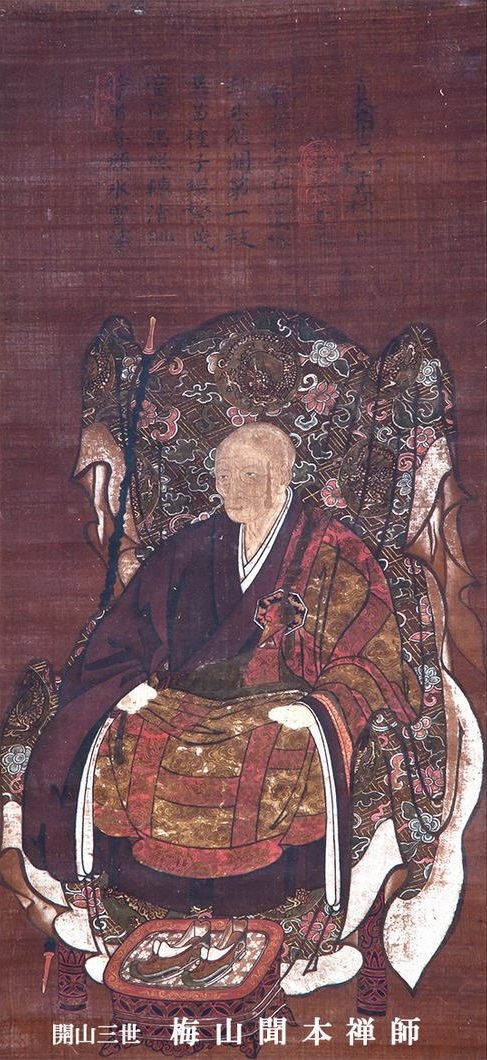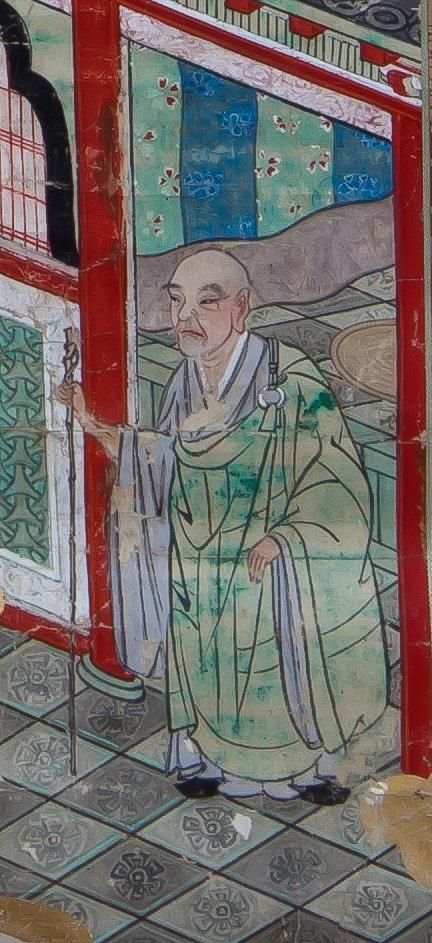ZEN MESTEREK ZEN MASTERS
« Zen főoldal
« vissza a Terebess Online nyitólapjára
梅山聞本 Baizan Monpon (?-1417)

Baisan Monpon (梅山聞本, died 1417) was a Sōtō Zen monk. He received dharma transmission from Gasan Jōseki and is considered a patriarch by the Sōtō school. He was the author of the 禪戒論 Zenkai-ron (Treatise on Zen Precepts). His disciple Jochū Tengin (如仲天誾), who founded Akiba Souhonden Kasuisai in 1394, follows him in the line of patriarchs. His other disciples included Taisho (太初継覚) and Ketsudo Nosho (傑堂能勝), who founded Kōun-ji Temple in 1394.
One of the most important figures of the Sôtô school at the end of the 14th century. A native of Mino Province (in the current prefecture of Gifu), Baisan took the priestly vows at Genjiji, a monastery of the Vinaya school of Buddhism. He later studied Zen at Sôjiji and succeeded as heir to Taigen Sôshin.
In 1382, Baisan became the abbot-founder (jap. kaisan) of a monastery in the province of Echizen (in the current prefecture of Fukui), in fact an old temple which he renamed Ryûtakuji. He also founded the temple of Kongôji and was the abbot of Butsudaji. Baisan was appointed in 1390 as the eleventh abbot of Sôjiji, and founded in this monastery, with the heirs to Gasan, a system of abbacy rotation. Under this system, abbots of Sojiji were to be alternatively selected from among the principal lines originating from Gasan. Baisan died in the 24th year of the 応永 Oei era [1417].
Baisan is the subject of various miraculous anecdotes. In one, Baisan is said to have once taken refuge in a deserted house, lost in the countryside, to spend the night there. But the owner of the place returned in the middle of the night, dead drunk, and took the monk for a robber, unsheathed his saber and sliced sharply the intruder. The next morning, the householder awoke and was taken with remorse when he saw, to his great surprise, Baisan calmly seated in meditation. The man exclaimed: “How is this possible?” but Baisan did not answer, being satisfied to remove from his sleeves a small statuette of Kannon which he always carried with him. The statuette was sliced into two. The man prostrated and became – as one might expect - the disciple of Baisan.
Baisan is said to have had a particularly strong devotion to meditation. In the monastic code that he wrote in 1415 for his monastery Ryûtakuji, he enjoined its monks to meditate twenty-four hours out of twenty-four, if they did not have anything else to do!

「梅山禅師御絵伝」の中で「絹本著色梅山聞本禅師像」
Zen Ancestors Chart:
佛祖正傳菩薩大戒血脈
Busso shōden bosatsu daikai kechimyaku
The Bloodline of the Buddha’s and Ancestors’ Transmission of the Great Bodhisattva Precepts
1. Eihei Dōgen
(永平 道元 1200-1253)
2. Koun Ejō
(孤雲 懐奘 1198-1280)
3. Tettsū Gikai
(徹通 義介 1219-1309)
4. Keizan Jōkin
(螢山 紹瑾 1268-1325)
5. Gasan Jōseki
(峨山 韶碩 1275-1366)
6. Taigen Sōshin
(太源 宗真 ?-1371)
7. Baizan Monpon
(梅山 聞本 ?-1417)
8. Jochū Tengin
(恕仲 天誾 1365-1437)
9. Sekisō Enchū
(石叟 圓柱 ?-1455)